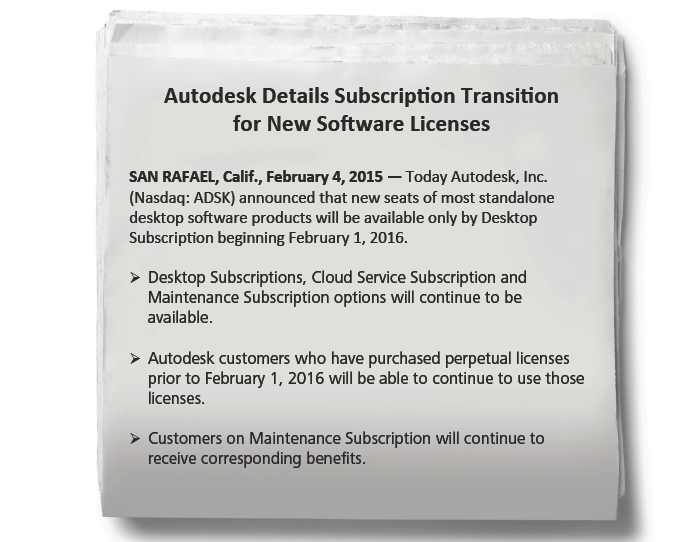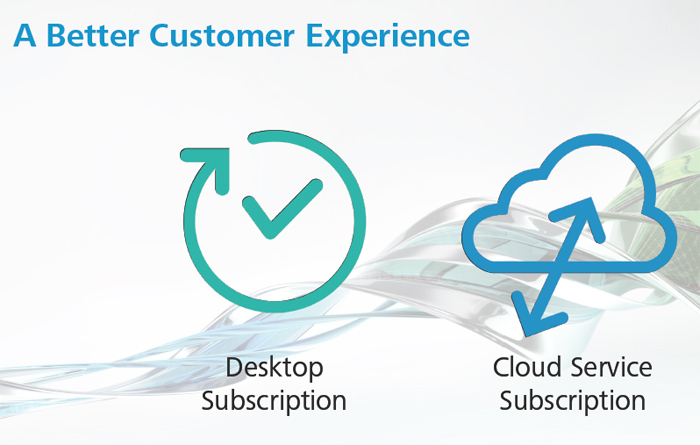Autodesk is embracing the cloud and fundamentally changing the way companies buy and use their CAD tools
From 2016 it will no longer be possible to buy perpetual licenses of Autodesk’s individual products as the company starts to move customers to a pure subscription service. It will, however, still be possible to acquire perpetual licenses of Suites for some time after.
The bold decision to remove the option of buying and owning individual products is great news for Autodesk as it can cut down on piracy, maintain the price and margins around the world and claw back revenue given to its sales infrastructure of dealers and distributors. It could also be beneficial for customers as everyone will be on the same version of Revit, a longstanding issue which hampers collaboration.
However, customers that have stuck to three year upgrade cycles may not be so receptive. While Autodesk will hope to bring as many of these on board with desktop subscription pricing vs perpetual ownership with maintenance, those that are used to upgrading at their own pace may not be so happy with this enforced change and choose to seek out alternatives.
The company has already announced subscription and term licensing and has moved elements of product fulfilment to web delivery and added services to its offering within the subscription package.
Andrew Anagnost, Sr. VP, industry strategy and marketing at Autodesk, the man behind the company’s evolving model, told AEC Magazine that desktop subscription with cloud services provided a better customer experience versus shipping just a boxed product.
It is easier to deploy software, simplifies upgrades and offers more flexible access to tools and new workflows. The company is also offering a range of new on-line ‘cloud’ services for collaboration, rendering and analysis.
Autodesk is giving the market a year’s notice to this transition and will offer flexible terms to those who have individual perpetual licenses, such as multi-year subscription deals and no charge for maintenance. The company will also offer additional programs.
Having said that, Autodesk’s cloud offerings and subscription roll out appear to still be embryonic in many places and the company has yet to find the right amount of features when compared with the subscription fee to please the masses. Autodesk is making this transition second only to Adobe in speed in the software industry.
The changes to the dealer and distribution channel will be interesting, as over time many of these have been weaning themselves off boxed product revenue and turned more to training and offering services.







